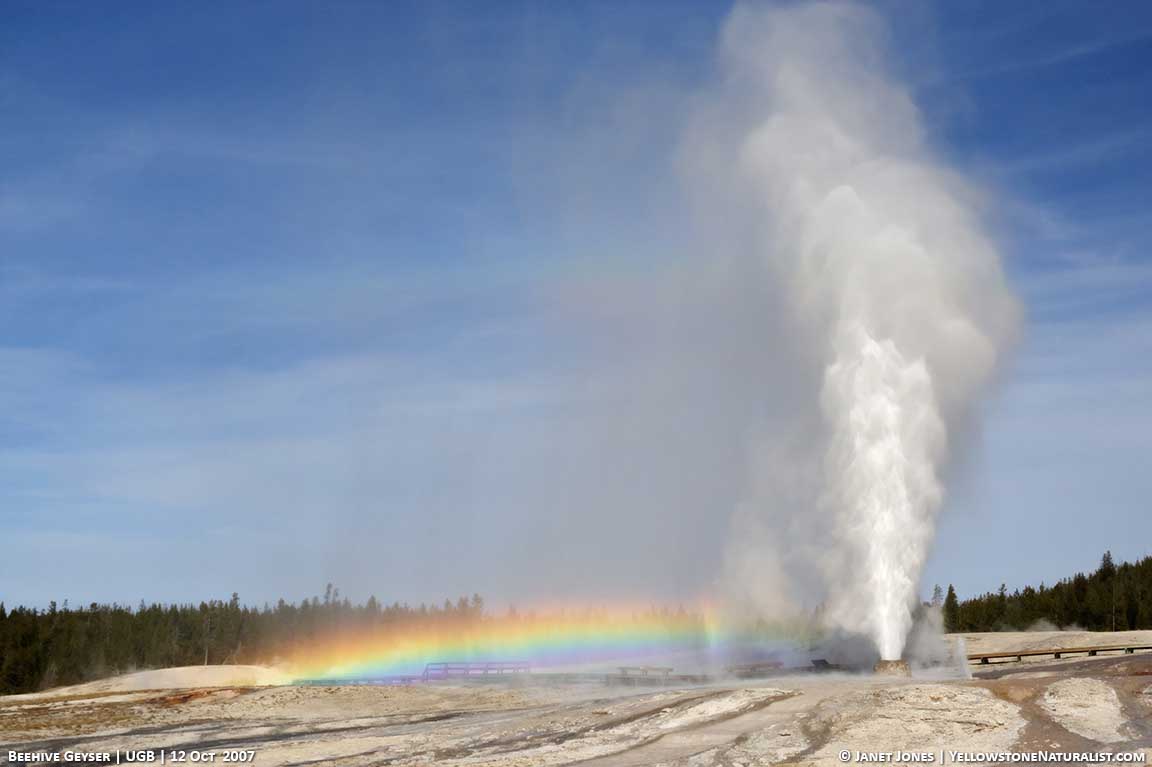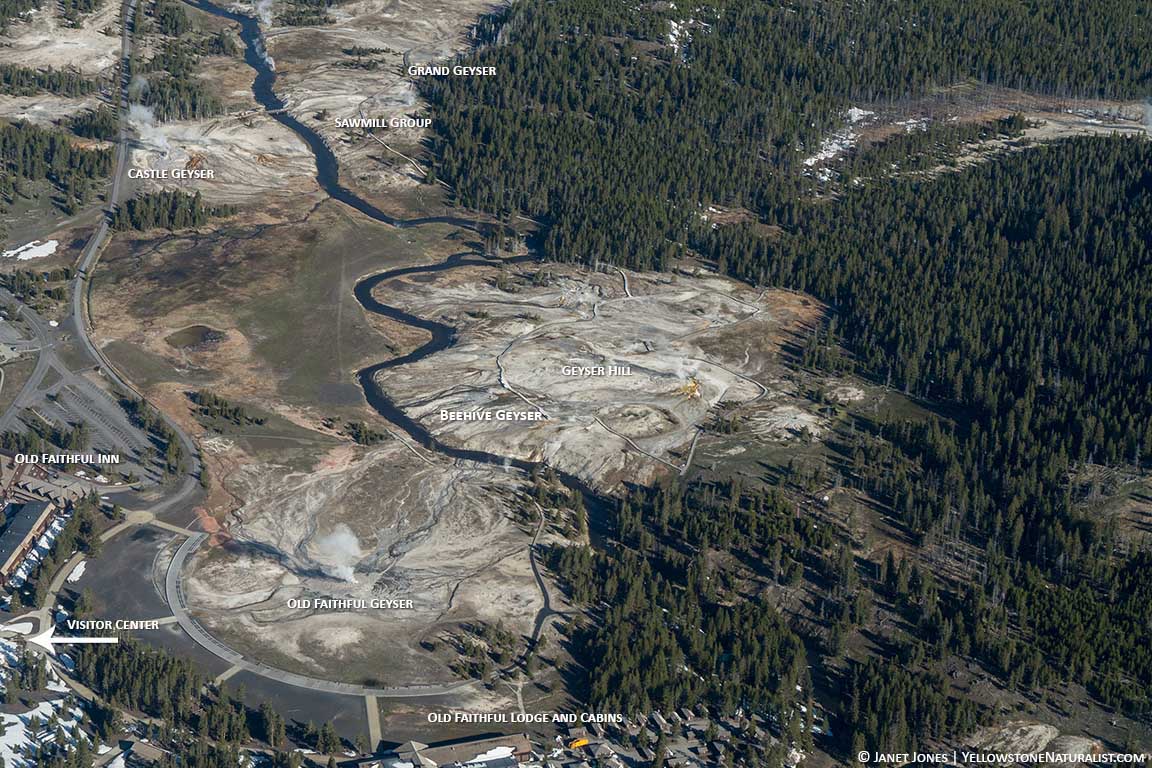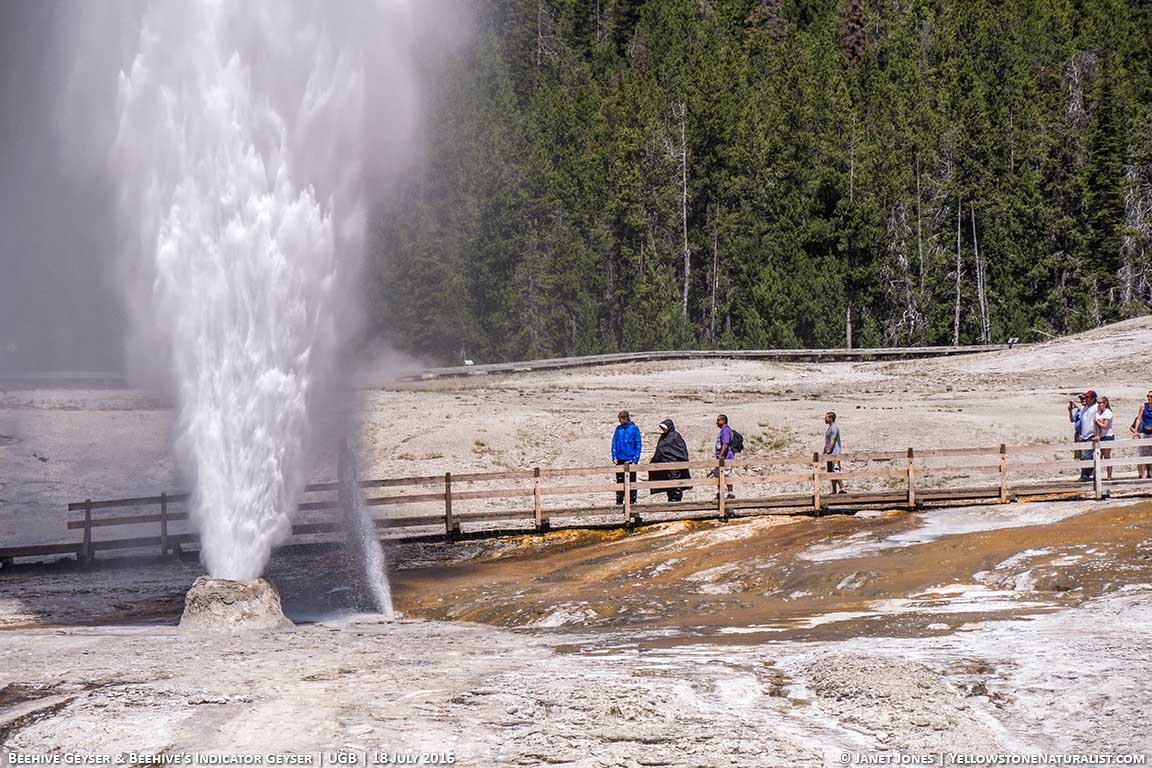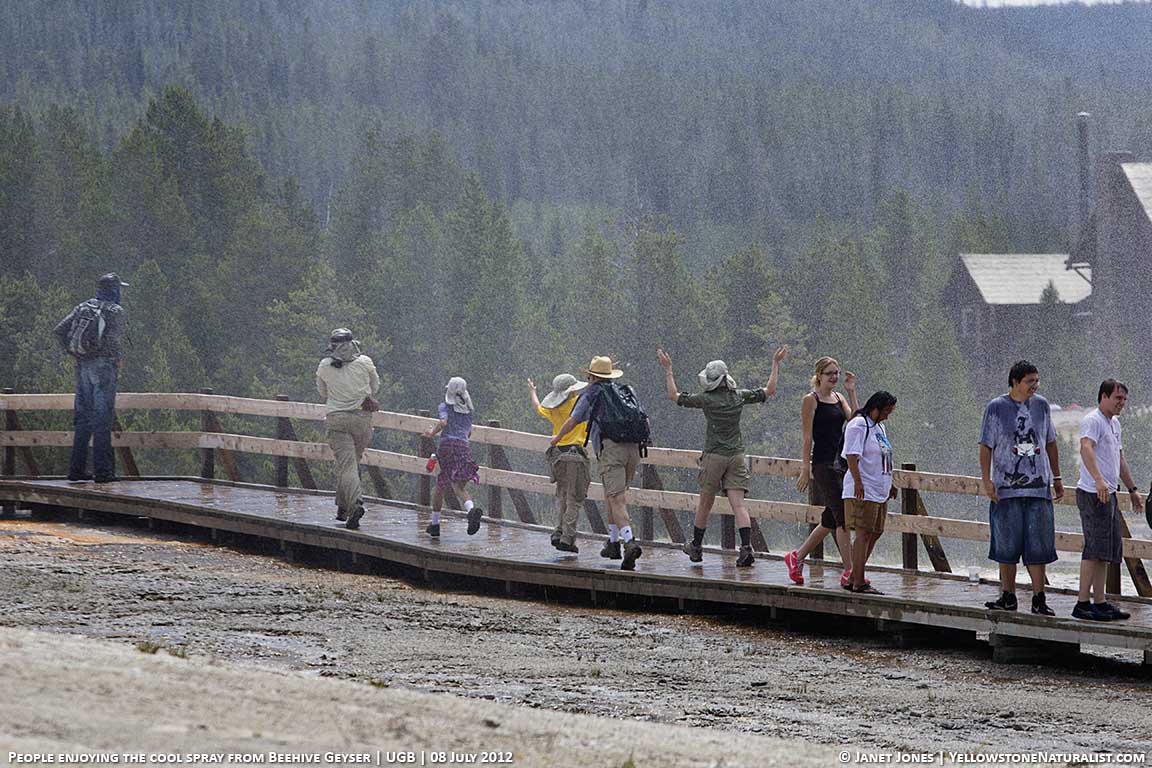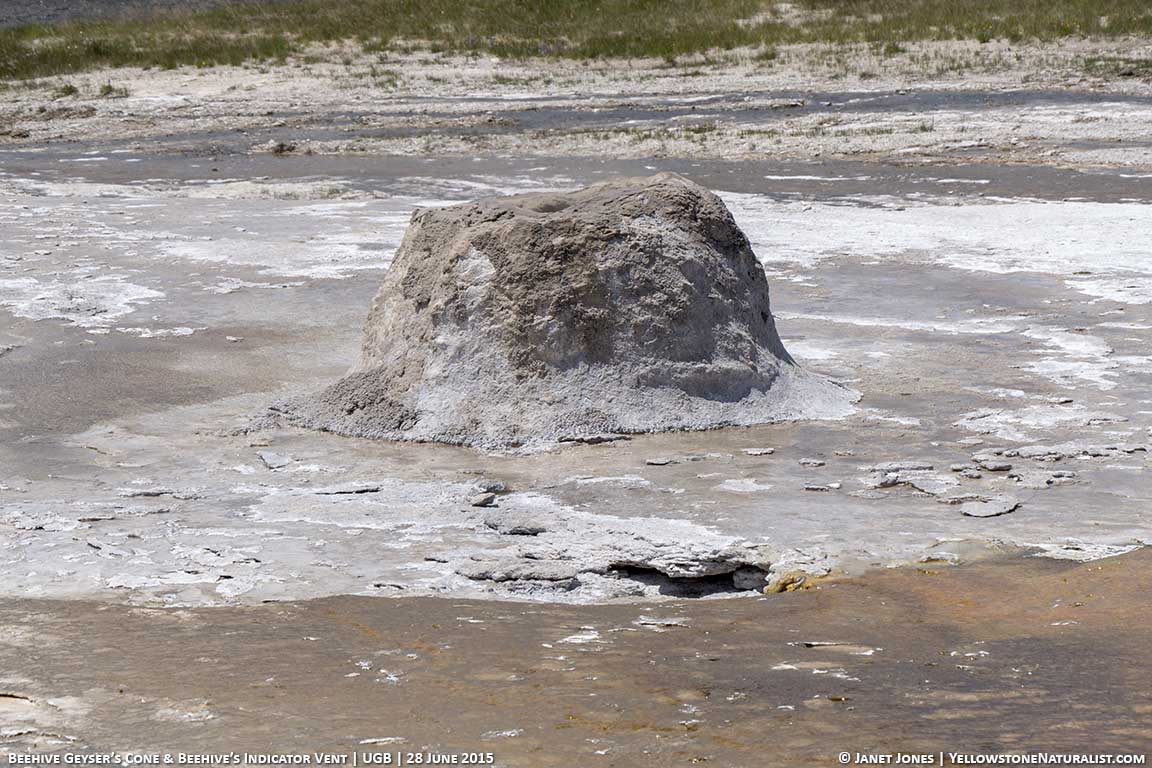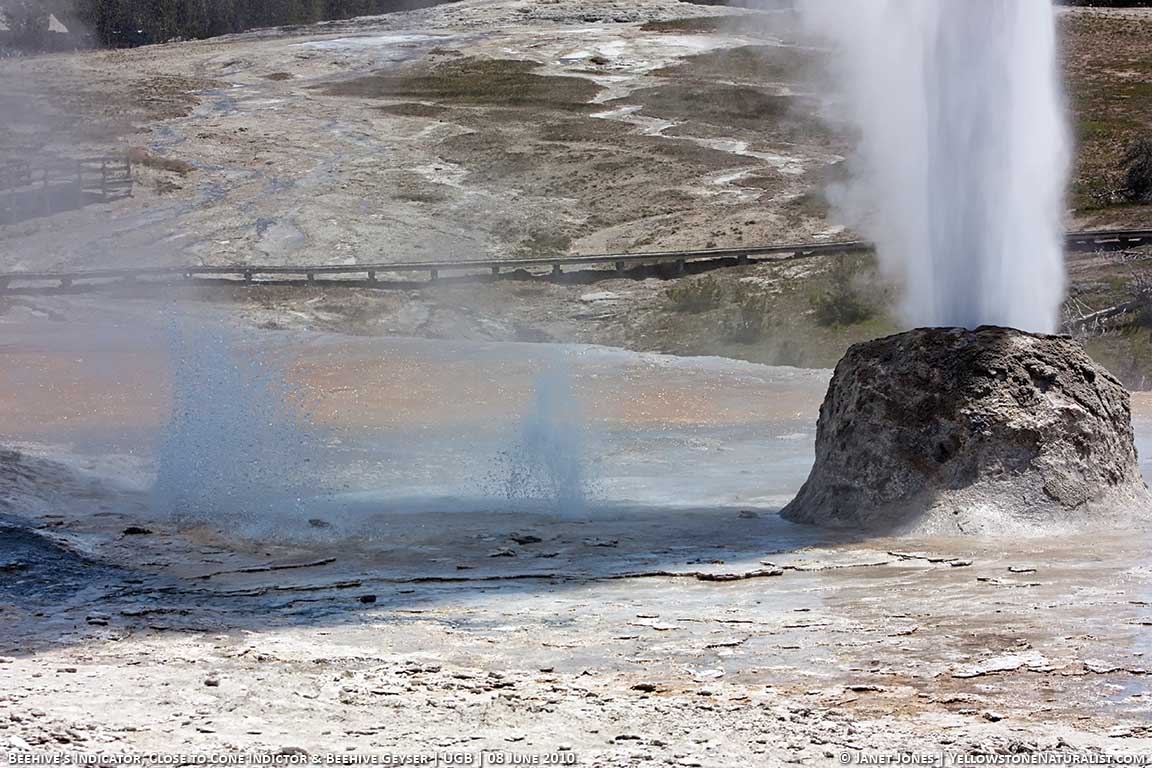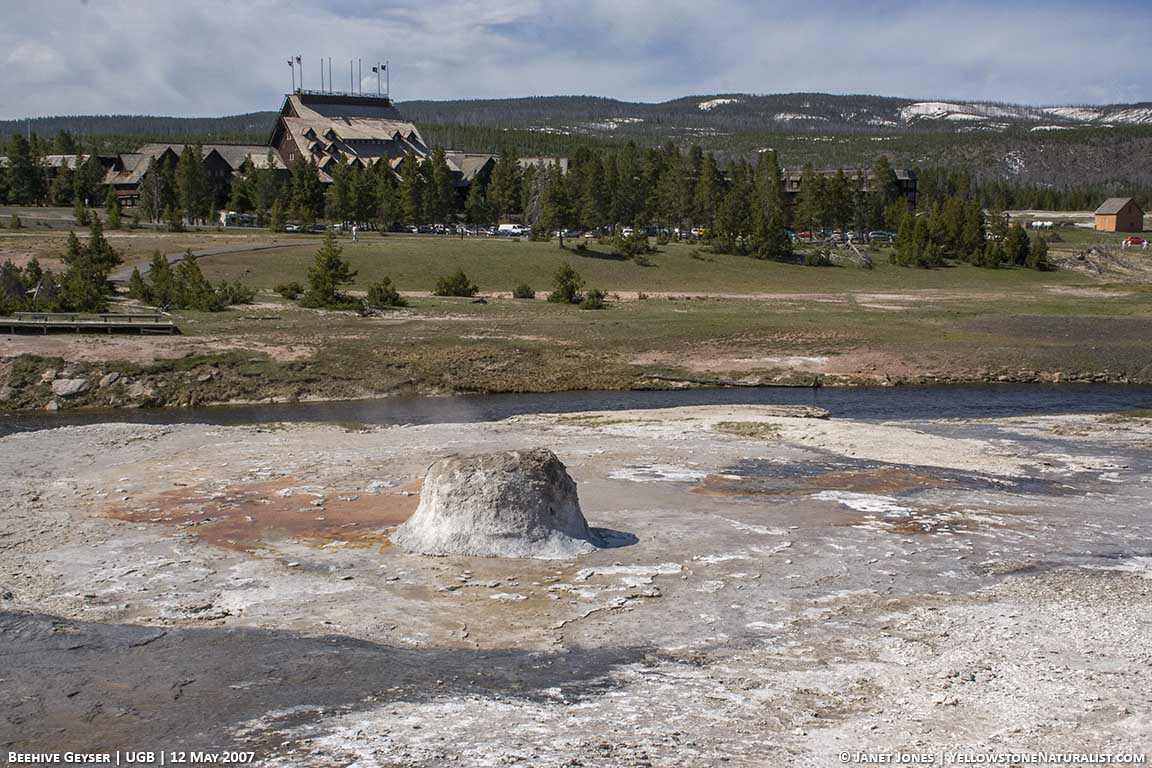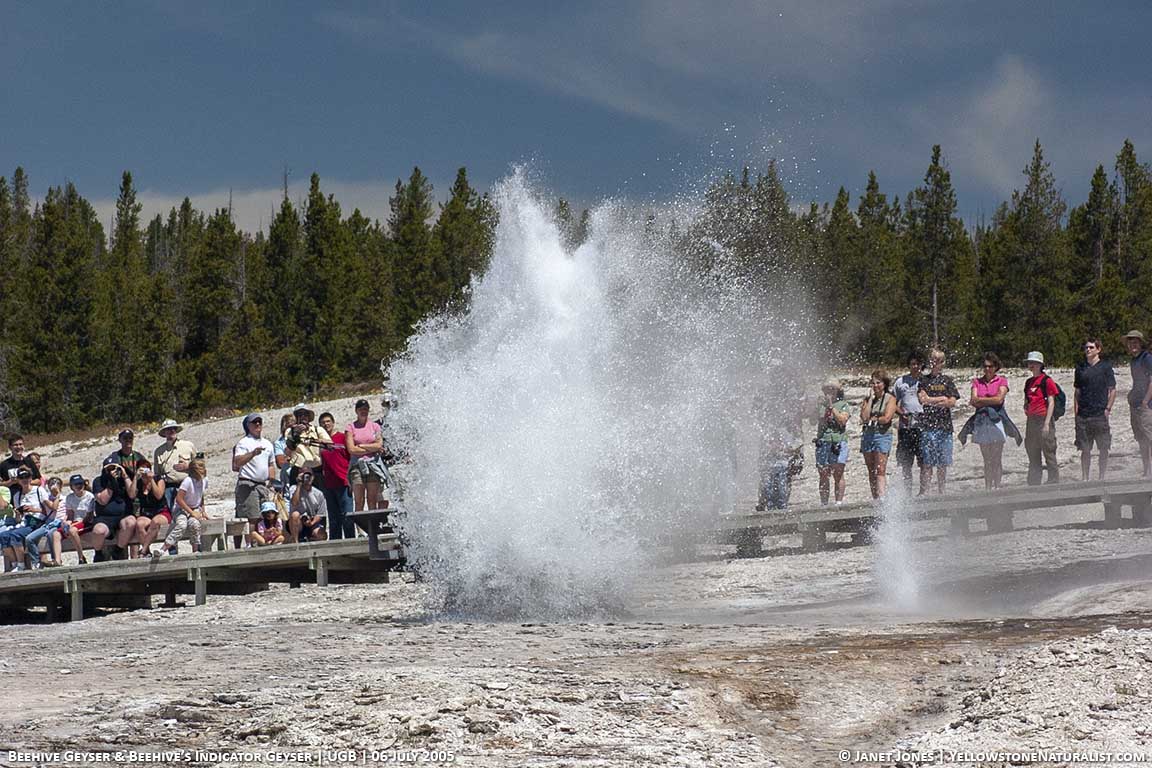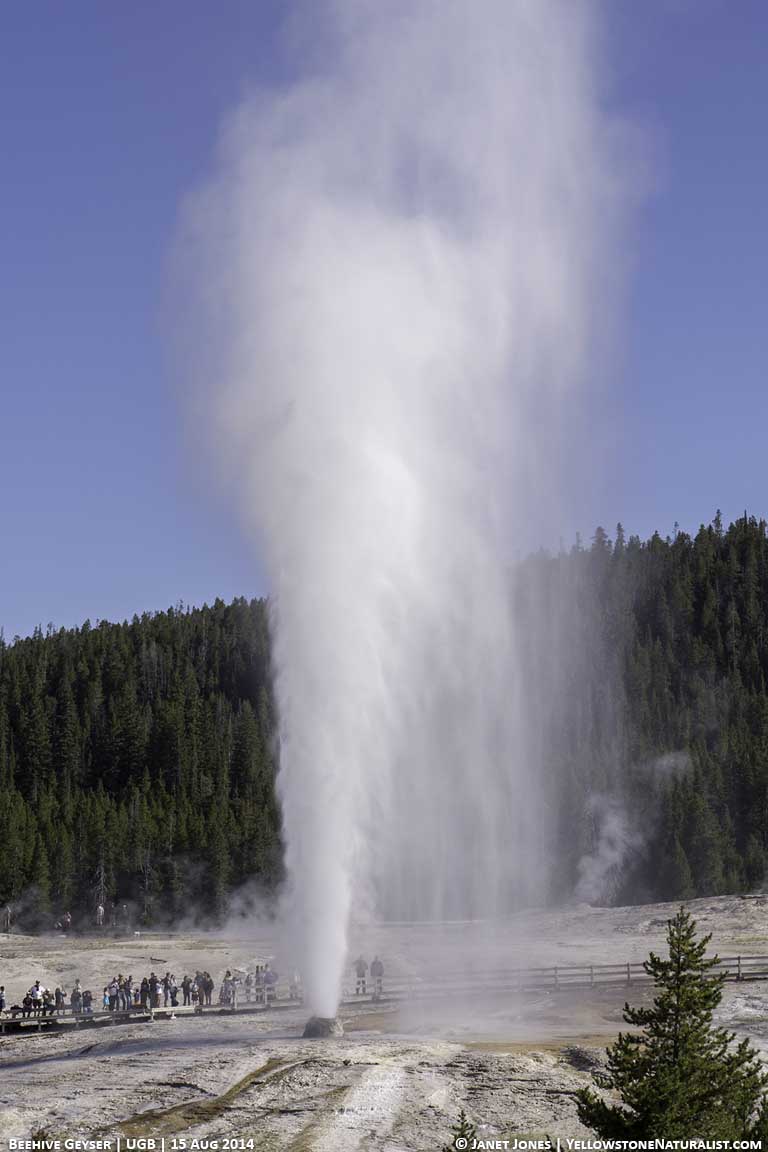Get to know Beehive Geyser
It’s time to get to know another geyser. In this post, I’ll share information on Beehive Geyser, one that brings a smile to many faces.
WHERE IT’S LOCATED
Beehive Geyser is located along the lower boardwalk path on Geyser Hill, not far from Old Faithful. The cone looks like a large chunk of rock on the sinter of Geyser Hill from a distance.
ABOUT BEEHIVE GEYSER
Beehive Geyser is taller than Old Faithful and eruptions last about a minute longer than Old Faithful. While Old Faithful is beautiful, Beehive Geyser is arguably one of the prettiest geysers with its graceful, tall slender jet of water that reaches up to 200 feet (60 meters) if the wind is calmer. When the wind is blowing, the top part of the eruption might be blown away into a fine spray that can reach farther than one might think.
Since the boardwalk is close, there’s it the potential of getting drenched to the skin in the spray. While the water that erupts from the cone is hot, the spray quickly cools to quite a cold shower which is not a bad thing on a hot summer’s day. Noticing the wind direction is a good thing to do when watching an eruption from the boardwalk. There are geyser gazers (geyser enthusiasts) who bring ponchos and umbrellas just to stand in this different type of “holy water.” Also, know that the water has silica in it, and if allowed to dry on surfaces (camera lenses, glasses, etc.) it can leave a mineral deposit that’s difficult to clean off. Wipe them off quickly or keep them stowed away.
BEEHIVE’S INDICATOR
Beehive is also a favorite because it has an indicator for a possible eruption that works…most of the time. Beehive’s Indicator Geyser (affectionately known as “Indy”) erupts 6-10 feet high a few feet from Beehive’s cone. These eruptions start when there’s water rising in the system and come anywhere from a few moments before an eruption to up to a half an hour prior. While there are times when the indicator can erupt without a follow up eruption from Beehive, and Beehive can erupt without the indicator erupting first, usually, we get about a 10-15 minute warning from the indicator. This is helpful if you’re in the geyser basin as more people have time to get to a location where they can watch the eruption. If you’re not in the Upper Geyser Basin, you can still watch online.
Thanks to coordinated efforts of webcam operators and viewers who watch for the indicator, you can now get text messages for when it’s seen in eruption.
There are multiple small vents around Beehive’s Cone, but the most notable one other than the main indicator is Beehive’s Close-to-cone Indicator that sometimes erupts with the main indicator.
HOW ERUPTIONS HAVE CHANGED OVER TIME
Beehive Geyser, while currently fairly regular, has not always been a regular performer. In the early 1900s, a guide book stated that Beehive erupted every 12-40 days, however in the first three decades of Yellowstone existing as a park, Beehive erupted regularly. In 2007, Beehive had a short dormancy that lasted long enough for microbes to grow near the cone thanks to continual water from the small bubblers that surround the main cone. Even now it can go quiet for a couple of days at a time. This is just yet another example of how the geysers change. Sometimes going dormant is not a permanent state.
HOW TO WATCH FOR BEEHIVE GEYSER
While Beehive is not one of the park service’s predicted geysers, on Geyser Times, it usually is. However the prediction window is fairly large, and the eruptions can happen outside the window a bit too frequently for the park service to take this one. But knowing that, take a look at the predictions on Geyser Times to give you a general idea of when to expect it.
If you want to catch it while on the boardwalk, you can wait for the indicator that fills with water first, and then usually starts to erupt within a minute or so. Beehive’s Indicator looks like a slot in the sinter on the “left” side of the cone as you see it from the boardwalk. Or simply wait for the text and get yourself to a place where you can watch it.
ERUPTIONS
While Beehive can splash up a foot or two just about any time, these don’t necessarily mean much of anything other than there’s water in the system. But seeing many fairly close together is not a bad indication – and even better if the Indicator is erupting. The start of the eruption usually comes from a larger splash that may disappear and quickly return and build into the full eruption. It takes a bit for the eruption to reach full height, and it holds there for 30 seconds to a minute before gradually descending.
Once the water has been expelled, the steam phase begins which can be quite loud. In fact, eruptions in the middle of the night can wake visitors during the summer. The full eruption, including the steam phase takes about five minutes.
IN CONCLUSION
Considering it usually erupts only once during daylight hours, Beehive may be harder to catch if you only stay for a short time in the Upper Geyser Basin, but if you stay in the lodging at Old Faithful, you have a very good chance of catching this darling geyser in person. It’s definitely worth it.
